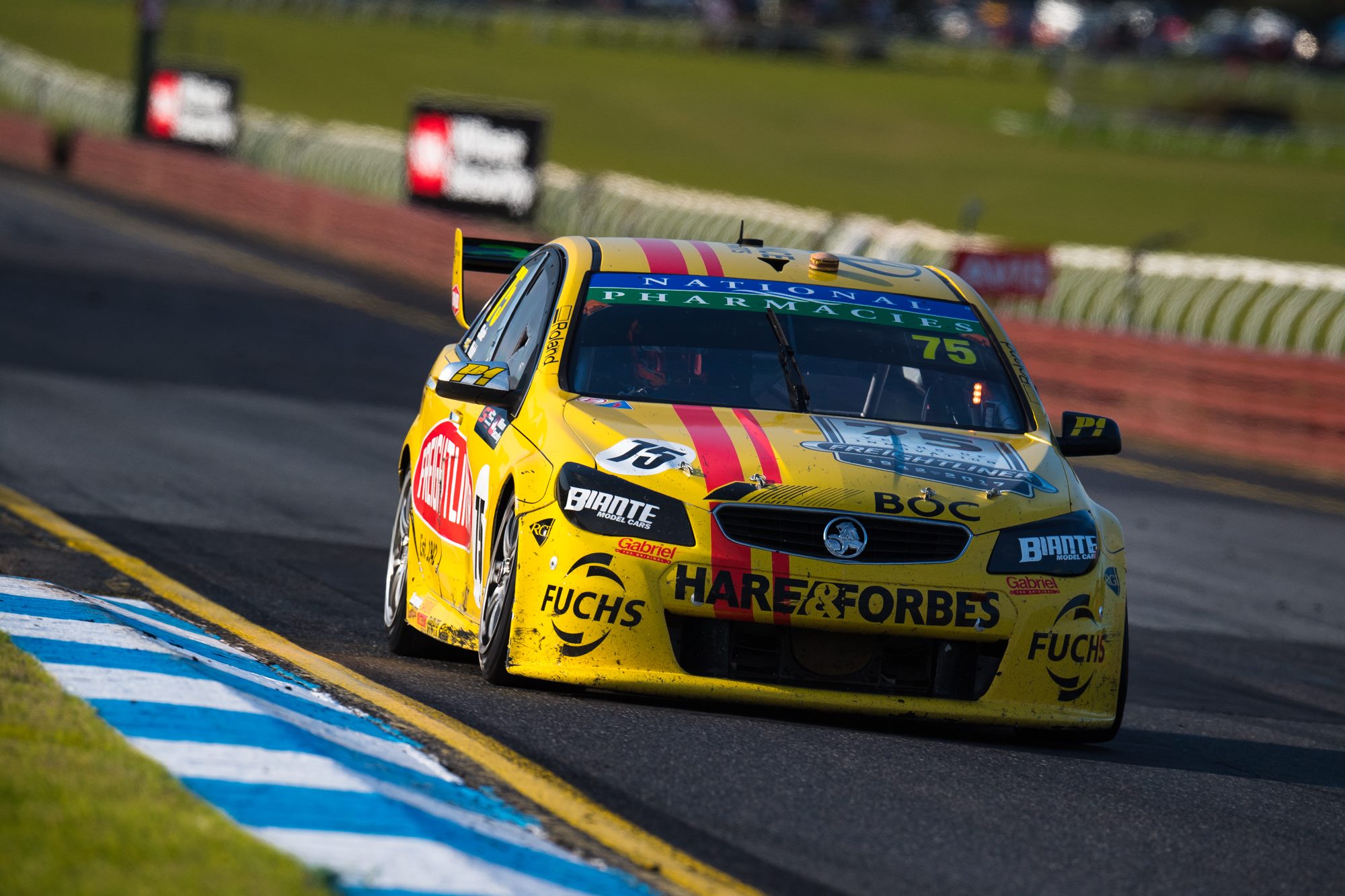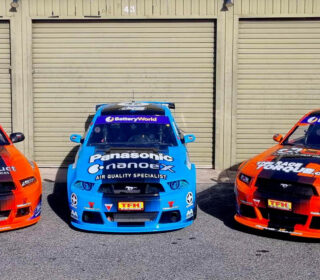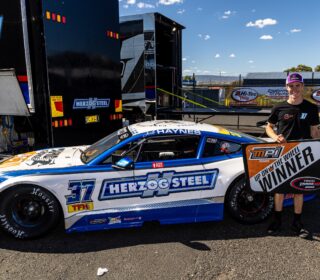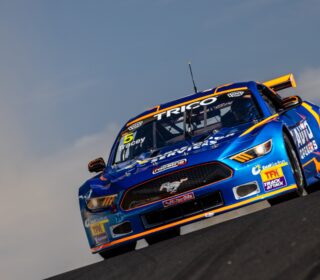RACING RULES: TIME TO SIMPLIFY?

TIM SLADE and Ash Walsh finished ninth in the Sandown 500 last weekend, only to have their Freightliner Racing Holden disqualified a day later due to a breach of minimum driver time regulations.
Fair enough.
Brad Jones Racing then issued a 881-word statement afterwards challenging the judgement and questioning the exclusion, even though there is no chance now of the decision being overturned.
That is fair enough too: what BJR had to say to explain their side of the story made a lot of sense. In fact, both the stewards interpretation of the rules, and the way BJR understood it can both be argued in the positive or the negative.
And in that we find the crux of the issue.
Could it be that our sport has become overly complicated and may have reached a point of having so many regulations that it has become almost unintelligible for the fans sitting in the grandstand or watching on TV.
There’s too much minutiae to sift through and not enough of a Colin Chapman-style ‘add lightness’ philosophy about it all.
For instance, here are the regulations governing the driver and co-driver time requirements in two-driver Supercars events.
8.4.6.1 the total driving distance for each Driver must not exceed two-thirds (2/3) or the scheduled race distance; and
8.4.6.2 the total effective resting time for each Driver must be equal to at least one-third (1/3) of the scheduled race distance.
8.4.6.3 the scheduled race distance will always be considered as the number laps listed in the Supplementary Regulations, irrespective of a time certain finish being reference and/or applied unless, at the sole discretion of the Stewards, a reduced distance is necessary.
For the record, BJR were charged with a breech of 8.4.6.2 – failure to ensure one driver reached the minimum ‘rest’ time out of the car.
Now, these regulations are in place for a reason; and in a simplistic way avoid a ‘Barry Mulholland’ situation.
For those not current on their Bathurst history, the Barry Mulholland situation occurred in 1968, when he and Bruce McPhee won the Hardie Ferodo 500 driving a Holden Monaro GTS.
Rules at the time stipulated that the co-driver had to do a minimum of one lap to qualify as having competed in the race and be eligible to receive a trophy should the car place. Due to his unique arrangement to drive with McPhee, that’s exactly what Mulholland did and as a result will go down in history as the Bathurst winner with the least number of laps completed en route to a victory on the Mountain.
In a more technical sense, the modern regulations are a staple in endurance racing to manage a drivers’ workload and ensure that both parties share – if not equal – then a reasonable amount of the workload throughout the race.
The problem is, we live in an era where the officialdom are forced to use 500 words when writing a regulation to try and cover off every eventuality and remove the chance of canny team managers finding loopholes and bending the rulebook to their advantage. Which is, of course, their job.
A tight rulebook, by the way, is completely understandable in a formula that is designed to be as even across all competitors as possible.
However, at some point there’s going to need to be a moment of reflection about how this impacts the fans.
A review of the Sandown 500 broadcast – as superbly produced as ever – on the weekend has several minutes of Neil Crompton ploughing through a rule-book trying to work out the correct definition of rule 8.4.6.1, 2 or 3 and how it applied to the Ash Walsh situation on the weekend.
And as good a job as Neil did explaining it in a way that fans could understand, I’m not convinced it’s the kind of thing a he should have to do during a race like that because I’m sure the casual fans were sitting at home going ‘Huh?’.
The problem is compounded in this case because the Sandown 500 did not go the full distance on the weekend. For the most part, teams work backwards from the finishing lap when they’re working out race strategy and usually that’s fine – until you realise you don’t actually know on what lap the race could actually be called.
For instance: had there been a late Safety Car the final lap number would have changed again. It’s another variable and one that pokes more fallibility in the regulations and creates situations like BJR experienced on Sunday.
You can be the best broadcaster in the world but still struggle to simply explain some of these regulations to casual fans.
Judging by the amount of eye-rolling going on amongst experienced journo’s in the media centre as the race unfolded, I’d say may of them – like I was – were experiencing the same feelings.
In the end, we were lucky. The great story of Cam Waters and Richie Stanaway winning and the evolving title fight snared all of the headlines and so they should. The exclusion of a ninth-placed car was but a footnote.
But what if the BJR car crossed the line first? Would we then exclude the winners of the Sandown 500 a day after the race. The rules say yes – but gee, it’d be a bad look.
By the way, if you’re expecting this to end in a solution, you’ve come to the wrong place. I don’t have it nor do I know how to go about resolving what is an inherently difficult situation.
I’m not going to suggest a rule saying ‘Co-drivers must do a minimum of 54 laps but must not spend more than 1.5 hours (Sandown) or 3 Hours (Bathurst) in the car at any one time, full stop.‘ could replace the three regulations above because I’m sure it wouldn’t work, though for the life of me right now I’m not sure why.
Still, I’ll leave finding this solution to significantly smarter minds than mine.
All I’m saying is that while we all work hard to promote the sport in a positive light to draw in fans, TV audiences and sponsors to the game, we can never stop looking inwardly to ensure the product we’re promoting is doing the job it should.
Look at Supercars like Game of Thrones.
For me, the earlier seasons were a bit inconsistent: some episodes had too much exposition and family drama and not enough sex, backstabbing and dragons. Some went the other way.
But as it matured and the writers understood their product better, the balance between words and, err, swords became more even and ratings skyrocketed. The product became better and more balanced overall.
Supercars are the same: Sandown highlighted that there’s a balance to be found between British Touring Car style wheel-to-wheel racing some fans love and the cerebral Formula 1 strategies and technology enjoyed by others – because that race had both.
We’ve just got to get that balance right and avoid the really confusing stuff so that, like Jon and Dany hooking up, all will be right with the world.
Speaking of Game of Thrones, Bathurst is next and based on the unpredictability of this year’s grid there’s as much chance as a dead guy on a dragon attacking McPhillamy Park as there is picking a winner.
Should be fun, then..
WORDS: Richard Craill
IMAGE: Daniel Kalisz / Freightliner Racing







